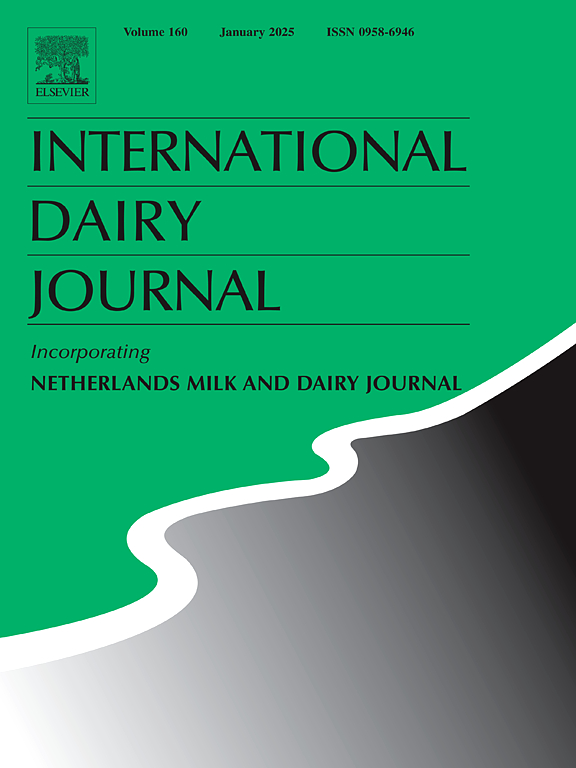Exposure assessment of Staphylococcus aureus in fluid milk
IF 3.4
3区 农林科学
Q2 FOOD SCIENCE & TECHNOLOGY
引用次数: 0
Abstract
Milk and dairy products serve as suitable media vectors of Staphylococcus aureus, a major food-borne pathogen, and there remains a potential for secondary contamination even after pasteurization, which may cause human illness and disease. The objective of this study is to assess the risk of introducing Staphylococcus aureus into the fluid milk supply chain. In this paper, a quantitative risk assessment model was developed based on the data of Staphylococcus aureus contamination in fluid milk and the relevant calculation formulas collected from references. The results of the Monte Carlo simulation model indicated that the pasteurization process was the primary factor affecting the Staphylococcus aureus concentration. The study further simulated shell-and-tube heat exchanger fouling during pasteurization using ANSYS FLUENT software, which found that fouling caused a decrease in pasteurization temperature, thereby increasing the level of Staphylococcus aureus in fluid milk (with a mean concentration of 0.519 log CFU/ml). This study provides a theoretical basis for the development of Staphylococcus aureus contamination control strategies for fluid milk and related products.
液态奶中金黄色葡萄球菌的暴露评估
牛奶和乳制品是金黄色葡萄球菌(一种主要的食源性病原体)的合适媒介载体,即使经过巴氏消毒,仍然存在二次污染的可能性,这可能导致人类疾病和疾病。本研究的目的是评估将金黄色葡萄球菌引入液态奶供应链的风险。本文根据文献中收集的液态奶中金黄色葡萄球菌污染的数据和相关计算公式,建立了定量风险评估模型。蒙特卡罗模拟模型的结果表明,巴氏灭菌过程是影响金黄色葡萄球菌浓度的主要因素。本研究进一步利用ANSYS FLUENT软件模拟管壳式换热器在巴氏灭菌过程中的污垢,发现污垢导致巴氏灭菌温度降低,从而使液态奶中的金黄色葡萄球菌水平升高(平均浓度为0.519 log CFU/ml)。本研究为液态奶及相关产品金黄色葡萄球菌污染控制策略的制定提供了理论依据。
本文章由计算机程序翻译,如有差异,请以英文原文为准。
求助全文
约1分钟内获得全文
求助全文
来源期刊

International Dairy Journal
工程技术-食品科技
CiteScore
6.50
自引率
9.70%
发文量
200
审稿时长
49 days
期刊介绍:
The International Dairy Journal publishes significant advancements in dairy science and technology in the form of research articles and critical reviews that are of relevance to the broader international dairy community. Within this scope, research on the science and technology of milk and dairy products and the nutritional and health aspects of dairy foods are included; the journal pays particular attention to applied research and its interface with the dairy industry.
The journal''s coverage includes the following, where directly applicable to dairy science and technology:
• Chemistry and physico-chemical properties of milk constituents
• Microbiology, food safety, enzymology, biotechnology
• Processing and engineering
• Emulsion science, food structure, and texture
• Raw material quality and effect on relevant products
• Flavour and off-flavour development
• Technological functionality and applications of dairy ingredients
• Sensory and consumer sciences
• Nutrition and substantiation of human health implications of milk components or dairy products
International Dairy Journal does not publish papers related to milk production, animal health and other aspects of on-farm milk production unless there is a clear relationship to dairy technology, human health or final product quality.
 求助内容:
求助内容: 应助结果提醒方式:
应助结果提醒方式:


